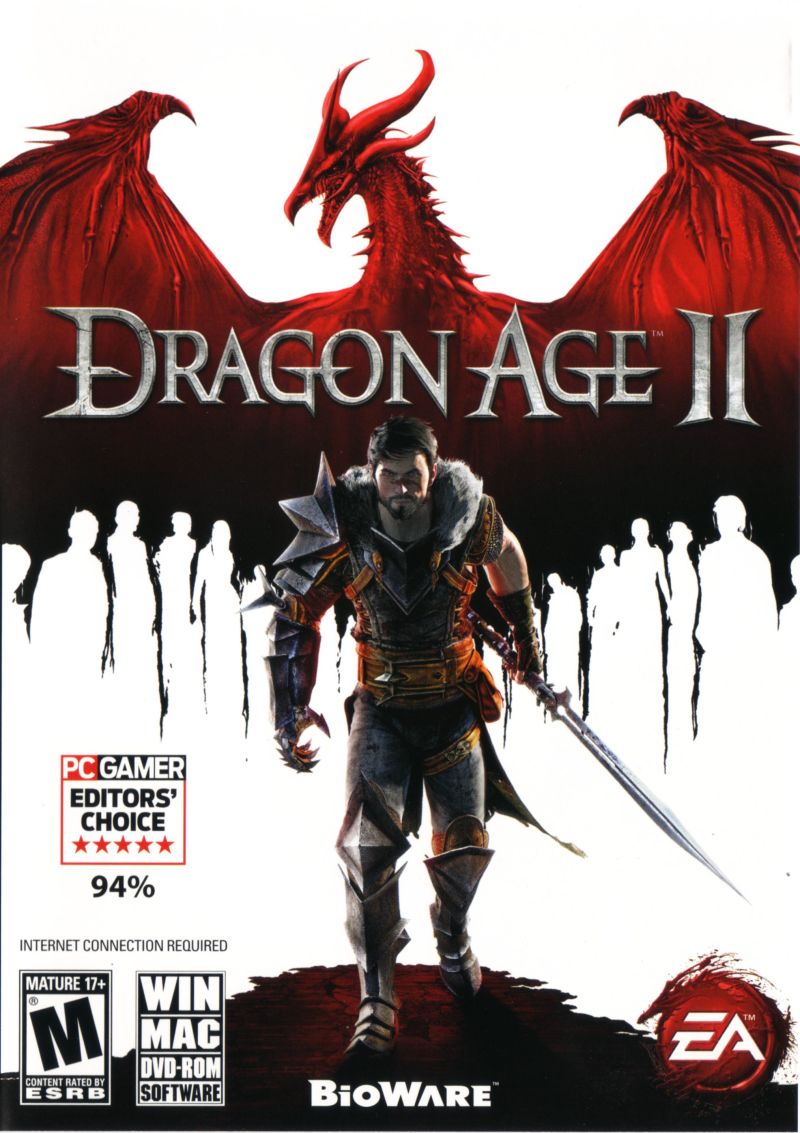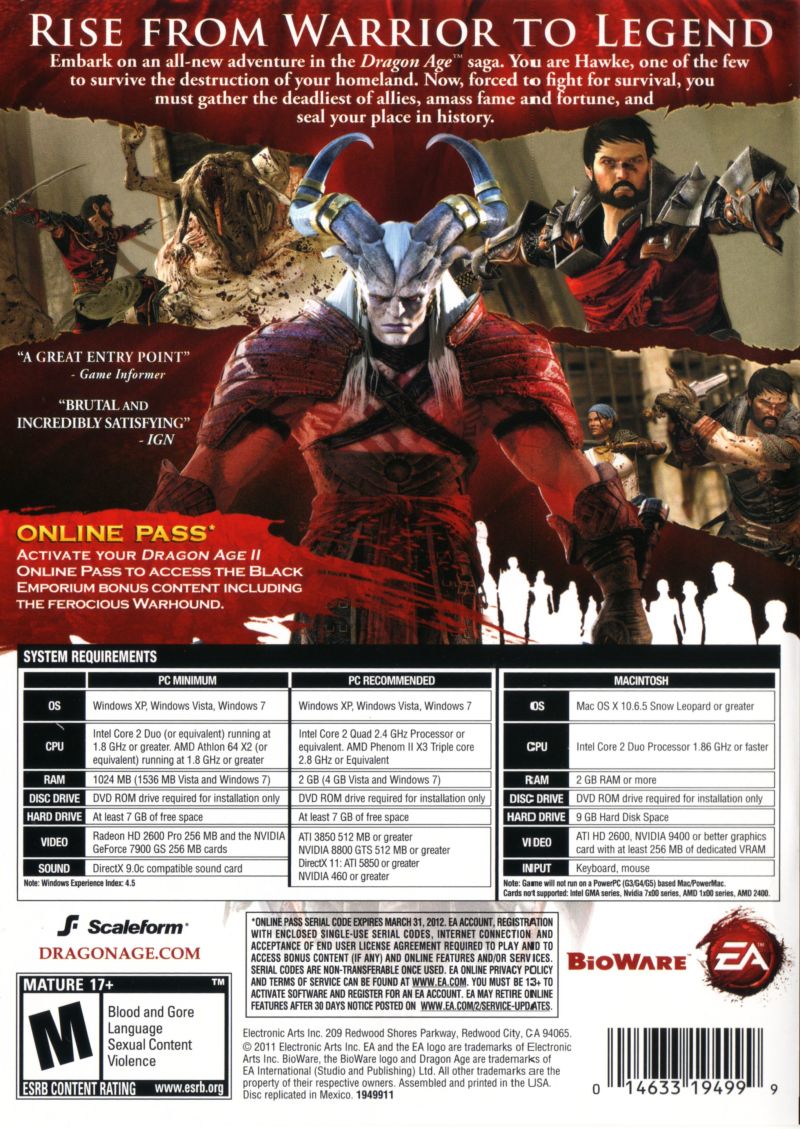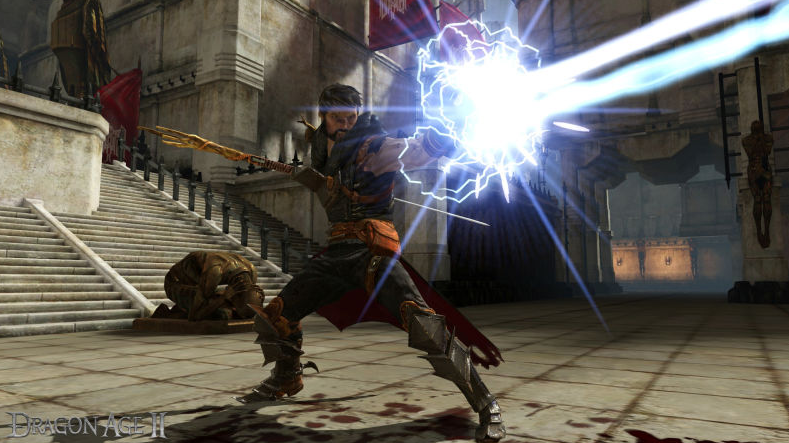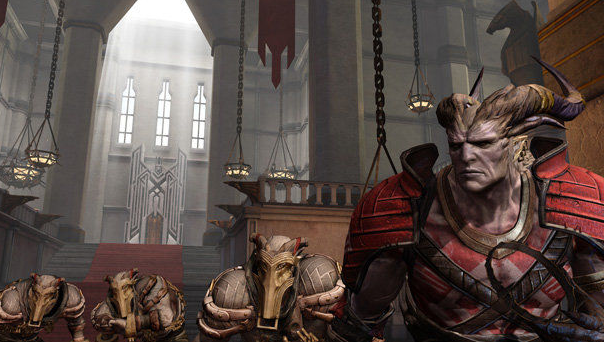Dragon Age II is a sequel to Dragon Age: Origins.
One of the key events early in the first game was the destruction of the village Lothering by the Darkspawn. However, we weren’t told that there was at least one person who survived the onslaught: a human named Hawke. Having become a refugee, Hawke travels to an area known as the Free Marches – more specifically, the city of Kirkwall. Hawke’s family shares the fate with many other Ferelden refugees; the authorities of Kirkwall are suspicious of the newcomers, and the path to financial stability is anything but easy. Meanwhile, the appearance of the mysterious race of Qunari heralds more trouble to the inhabitants of Kirkwall, as does the growing tension between the Templars and the mages. Hawke is caught in the middle of these political and social conflicts – what shall be the hero’s own path?..
Dragon Age II uses a “framed narrative” format: the story is narrated over a decade later by one of Hawke’s companions. Similarly to Alpha Protocol, the narrative is rather flexible; motivations and events vary depending on the player’s moral choices during the game. The game also adopts the “wheel-based” dialogue system from Mass Effect games: short responses that reflect different tones and attitudes the player wishes to choose for Hawke. Also similarly to Mass Effect, the main character’s race and name cannot be changed; however, everything else (appearance, gender, classes) can be freely customized.
The combat system is quite similar to the one used in the previous Dragon Age game (which, in its turn, dates back to the combat style used in Baldur’s Gate), though it has been noticeably sped up. Hawke can only be human, but the player can customize his or her physical appearance and character class (warrior, mage, or rogue). The player controls Hawke and up to three active party members, either “programming” their actions by assigning actions that should be taken under certain conditions (for example, healing a party member if his HP drops below 20%), or issuing commands to each character manually. The ability tree is also similar, the player being able to learn new abilities as the characters level up. Many abilities from the first game return, but some are absent or replaced with new ones. The abilities are divided into various disciplines, which correspond to the fighting style of the character.
Cover Art:
Screenshots:





